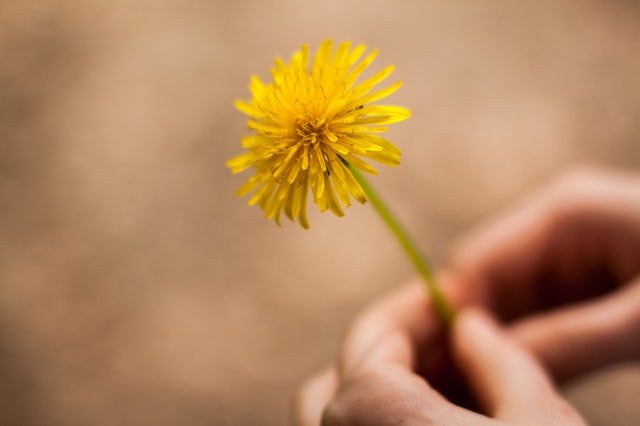
Dandelion (Taraxacum officinale) is a perennial herbaceous plant belonging to the Asteraceae family. With its choleretic, cholagogue and diuretic properties, it is an excellent ally for digestive problems and to stimulate diuresis. Let’s find out better.
Dandelion (Taraxacum officinale) is a perennial herbaceous plant belonging to the Asteraceae family.
With its choleretic, cholagogue and diuretic properties, it is an excellent ally for digestive problems and to stimulate diuresis. Let’s find out better.
What is dandelion used for
Dandelion is used to promote digestion, regulate bile flow and to stimulate diuresis, for its choleretic and cholagogue properties, diuretic and mildly anti-inflammatory.
Benefits of dandelion
The benefits of dandelion are connected to mild digestive disorders that include the feeling of fullness, slow digestion, loss of appetite and flatulence.
In the peasant tradition the dandelion is also known as “piscialetto” or “pisciacane”, appellations that suggest the diuretic properties of the drug.
The diuretic properties of dandelion are responsible for flavonoids and partly potassium salts, which stimulate diuresis by promoting the elimination of excess fluids.
Its intake is therefore indicated in case of slight inflammation of the urinary tract, as an adjuvant in minor urinary disorders.
How to use dandelion leaves
The dandelion plant grows spontaneously in nature and can be easily recognized.
Although dandelion leaves can be found in herbal medicine, these can be harvested in nature, choosing places that are not very polluted. Once washed, dried and dried, they are used to prepare infusions.
Dandelion herbal tea is prepared with 5-10 grams of leaves infused in boiling water for 10 minutes and is consumed one to three times a day.
Alternatively, fresh dandelion leaves can be consumed as food.
How to recognize dandelion? It is a small herbaceous up to ten centimeters high, with the leaves gathered in a basal rosette at ground level.
The leaves are simple, oblong, lanceolate and lobed, with toothed margin without stipules.
The stem, which evolves later from the leaves, is a hollow, hairless and milky scape, carrying at the apex a yellow-golden inflorescence, called peep.
The dandelion flower, known as dandelion, is formed by two rows of membranous bracts, bent back and with the function of a calyx, enclosing the receptacle, on which hundreds of flowers, called flosculi, are inserted.
The fruits are achenes, provided with the characteristic pappus: a tuft of white hairs, originating from the modified calyx, which, acting as a parachute, facilitates the dispersion of the seed with the wind, when it detaches from the flower head.
How to eat dandelion
Dandelion can be consumed:
- Leaves;
- buds;
- open flower heads;
- root.
The leaves should be harvested before flowering and are used raw or cooked, alone or with other herbs. They have a bitter but pleasant taste and are excellent in salads or added in omelettes, savory pies or fillings.
To cook dandelion leaves it is enough to boil them for a few minutes in boiling salted water. Eventually they can then be sautéed in a pan with garlic and oil.
The buds are instead eaten raw in salads or lightly seared in water or, again, preserved in vinegar. Open flowers are mainly used to decorate salads or to prepare a syrup known as dandelion honey.
Finally, dandelion root can be eaten raw (it is decidedly bitter) baked or boiled.
With the roasted and ground dandelion root, dandelion coffee is then prepared, an alternative to traditional coffee or to barley or chicory coffee.
Healing properties of dandelion
In case of digestive problems, the dried root is taken in a dose of 3-4 grams in decoction or 4-10 grams in infusion, up to three times a day.
Alternatively, coated tablets containing 300 mg of dry extract can be taken, once or twice a day.
As for the mother tincture of dandelion, 35 drops of it are taken after main meals. If symptoms persist beyond two weeks, you should consult your doctor.
To take advantage of the diuretic action of dandelion, the root is instead taken as an infusion or decoction alone or with other herbs: the dosage is always 3-4 grams for the decoction and 4-10 grams for the infusion.
Side effects of dandelion
Dandelion is considered a safe drug that does not have serious side effects. In predisposed subjects, however, the intake of dandelion can cause allergic reactions.
In addition, dandelion is contraindicated in case of:
- Obstruction of the bile ducts;
- gallstones;
- liver diseases;
- peptic ulcer;
- ipekaliemia (high levels of potassium in the blood).
Dandelion should not be administered concomitantly with therapies that may cause hyperkalaemia including beta-blockers, NSAIDs and ACE inhibitors and in patients taking lithium therapies.
Finally, the use of dandelion is not recommended in children under the age of 12 years.
Dandelion in herbal medicine

Dandelion in herbal medicine is used throughout the plant – root and aerial parts – which contain flavonoids, minerals, phenolic acids, bitter substances and sesquiterpene lactones. The roots are also rich in inulin and fructose. These substances, and in particular the bitter principles, are responsible for the properties of dandelion, an herb capable of increasing the production of bile and stimulating bile flow, thus improving liver activity and digestion.
The therapeutic use of this plant was not known in antiquity. In the Middle Ages, according to the Theory of Signatures, having the yellow flower as yellow bile, it began to be used as a remedy for the liver. And as often happens, scientific evidence has confirmed this theory.
In 1546 the naturalist Bock attributed to dandelion a diuretic power, while a German pharmacist of the sixteenth century attributed to the plant vulnerary virtues (that is, capable of quickly healing wounds).
Dandelion is used in traditional Chinese medicine as a depurative able to purify the Heat, eliminate toxins and dissipate nodules, with hepatic (hepatitis) and gastric tropism.
A saying French states that dandelion “purifies the kidney filter and dries the liver sponge.”






